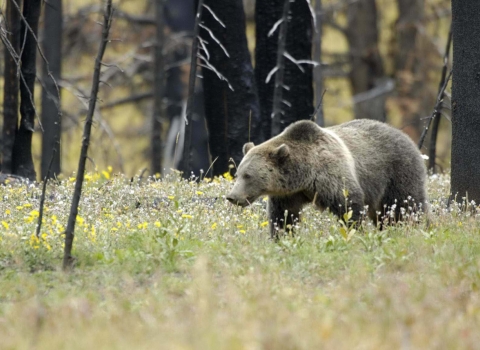By now, much of the community is aware of Parker River National Wildlife Refuge’s draft Environmental Assessment to remove the Pink House (review the proposal here: https://www.fws.gov/refuge/parker-river). On Monday, I participated in a public forum to hear the community’s concerns and answer questions. I am grateful for the level of interest and involvement in this issue. People have been passionate, but also respectful and understanding. I believe, however, that I have an obligation as a public servant to correct misinformation and help clear up the considerable confusion surrounding this issue.
First, in response to community members who advocated for saving the house, the U.S. Fish and Wildlife Service has spent 8 years investing limited resources into finding a win-win solution. That includes well over a thousand hours in staff time, from management and maintenance to law enforcement and realty. Additionally, we have continued to show our high level of commitment by maintaining the structural integrity of the house’s exterior, addressing everything from vandalism to roof leaks to broken windows. The proposal to demolish the house is neither sudden nor without an exhaustive effort to identify an alternate solution.
Second, we have been as open and transparent as possible. The refuge works with willing landowners, and any agreements, appraisals, and communications with these individuals must be kept confidential. Confidentiality is not only a matter of policy; it is almost always requested by the landowner. We have always acted in good faith and with the best intentions.
Third, our mission and policy dictate that all decisions – no matter how challenging – must consider our climate future. This includes sea level rise and storm frequency and intensity, all of which are projected to increase rapidly in this area (https://www.mass.gov/doc/final-report-29/download). The Pink House property already floods routinely during storm tides, cutting off access, threatening its structural integrity, and increasing the likelihood that debris and environmental contaminants are released into the salt marsh salt marsh
Salt marshes are found in tidal areas near the coast, where freshwater mixes with saltwater.
Learn more about salt marsh .
There is no feasible use of the house for the refuge, and continued expenditure of taxpayer dollars is not prudent. Rather, the proposed alternative to restore half the site to upland habitat and construct a low-profile observation platform on the existing footprint will enhance resiliency while offering environmental education and interpretation opportunities. Together, these comprise the core mission and legal mandates of your national wildlife refuge national wildlife refuge
A national wildlife refuge is typically a contiguous area of land and water managed by the U.S. Fish and Wildlife Service for the conservation and, where appropriate, restoration of fish, wildlife and plant resources and their habitats for the benefit of present and future generations of Americans.
Learn more about national wildlife refuge .
That said, the comment period exists in part to identify possible solutions that have not yet been explored. What could change the trajectory of the proposed demolition? A direct exchange with a willing landowner is the most likely path, but only if it meets requirements under federal law and is compatible with the refuge’s mission. For this to occur, the following conditions must be satisfied: (1) a landowner within 1-mile of refuge boundaries directly exchanges their lands for the Pink House (OR sells their lands to an already identified restoration partner, who would then exchange for the Pink House), (2) the exchange lands must be of approximately equal monetary value to the 1-acre Pink House parcel ($400,000-$500,000), and (3) the exchange parcel must be of greater ecological value than the upland and marsh habitat on which the Pink House sits.
Another path would be to relocate the house, which has been on the table since day one. However, our partners value the house in its present location and have decided not to pursue this. We remain open to this alternative should a solid opportunity present itself, particularly as a final means by which to save the structure structure
Something temporarily or permanently constructed, built, or placed; and constructed of natural or manufactured parts including, but not limited to, a building, shed, cabin, porch, bridge, walkway, stair steps, sign, landing, platform, dock, rack, fence, telecommunication device, antennae, fish cleaning table, satellite dish/mount, or well head.
Learn more about structure .
The Service has worked diligently for 3 years beyond the established November 2020 deadline to affect a land exchange. We continued even after our signed agreement with the ‘Support the Pink House’ group expired last December. If a viable exchange parcel exists, now is the time to act. Continuing to extend or delay the process is no longer an option.
While ineligible for a National Register of Historic Places designation, we acknowledge the local and cultural significance of the Pink House. Our preference is unchanged: we would like nothing more than to complete an exchange, where lands of greater ecological value are permanently protected while the house remains a cultural icon – for as long as mother nature allows it. Failing that, we must be prepared to face a difficult reality, but take some solace knowing that, collectively, we did everything within our means to achieve a different outcome.




